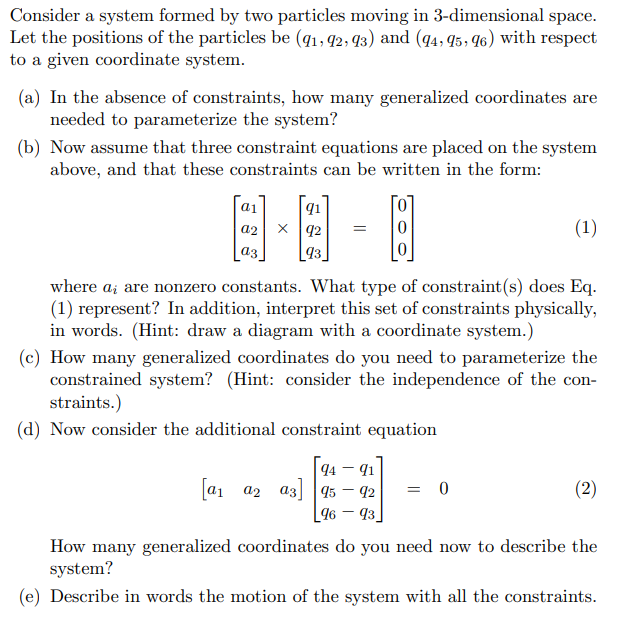Answered step by step
Verified Expert Solution
Question
1 Approved Answer
Consider a system formed by two particles moving in 3-dimensional space. Let the positions of the particles be (91, 92, 93) and (94, 95,

Consider a system formed by two particles moving in 3-dimensional space. Let the positions of the particles be (91, 92, 93) and (94, 95, 96) with respect to a given coordinate system. (a) In the absence of constraints, how many generalized coordinates are needed to parameterize the system? (b) Now assume that three constraint equations are placed on the system above, and that these constraints can be written in the form: a1 91 a2 92 = [93_ (1) where a; are nonzero constants. What type of constraint(s) does Eq. (1) represent? In addition, interpret this set of constraints physically, in words. (Hint: draw a diagram with a coordinate system.) (c) How many generalized coordinates do you need to parameterize the constrained system? (Hint: consider the independence of the con- straints.) (d) Now consider the additional constraint equation 94-91 [a1 a2 03] 95-92 = 0 9693 (2) How many generalized coordinates do you need now to describe the system? (e) Describe in words the motion of the system with all the constraints.
Step by Step Solution
There are 3 Steps involved in it
Step: 1

Get Instant Access to Expert-Tailored Solutions
See step-by-step solutions with expert insights and AI powered tools for academic success
Step: 2

Step: 3

Ace Your Homework with AI
Get the answers you need in no time with our AI-driven, step-by-step assistance
Get Started


